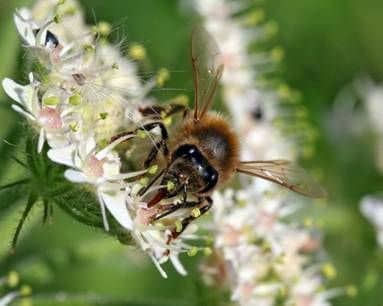
The low active state of bee colonies in October is due to a decrease in air temperature. Bees cease to fly and protect the tapewings, gather on honeycomb, where there is still or recently been brood.
In weak families and layers, cuts are made to prevent the penetration of bees from other hives and wasps.
Cells with a small amount of honey, of which the brood has just emerged, is removed, leaving for the frame a frame with at least 2 kg of honey.
To prevent the mouse from penetrating into the hive, they put the grill bars on the tapholes to the bottom, or replace them with lattices, through which only bees penetrate. It is better to do this when bees and wasps no longer fly.
On a fine day, the beekeepers make up their nests for the winter, leaving the honeycombs as much as the bees settle. Against varroatosis, bees are treated in a thermal chamber after the release of the last brood.
Revising and sorting the honeycombs left after making nests for the winter, the beekeepers part of them (rejected) are re-poured onto wax, and suitable ones (light ones) are stored in empty hives or a vault. To ensure that the honeycombs are not affected by the wax moth, the larvae of which settle mainly on old honeycombs, they are treated for a while with sulfuric gas at a rate of 50 g per cubic meter of box with honeycombs, or 80% concentrated acetic acid in a dose of 200 g per cubic meter for three days. The treatment is repeated after 10 days. Honeycomb can be treated with a 3% solution of chloramine, then put for 2-3 hours in a closed box, and then 10-15 h aerate.
Акарапидоз пчел. Что пьют пчелы.
The bee family and its composition